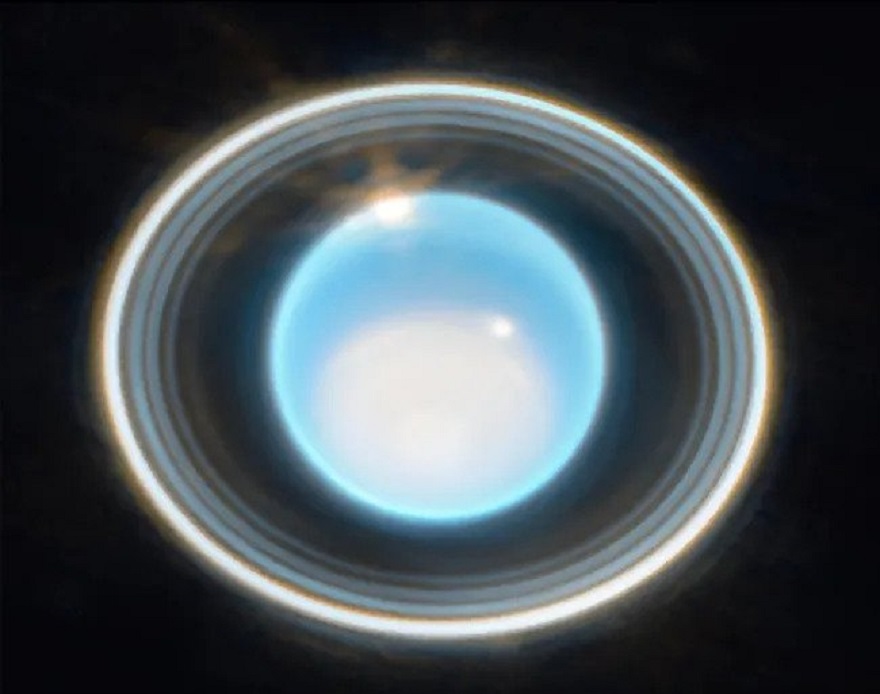Scientists have proved that the rings of Uranus are as we see them thanks to the five large moons of this planet. Their gravity “sweeps” all the particles out of certain zones but also prevents the rest from flying in all directions.

Where did Uranus get the rings from?
Scientist Stephen Kane from the University of California at Riverside recently published a study on the rings of the planet Uranus. He proves that their shape is related to the influence of the five largest moons of this ice giant.
Uranus is the seventh planet from the Sun. Its main feature is that the plane of rotation has an inclination of 97 degrees. That is, the planet actually moves in orbit, lying on its side. The main reason for this is what scientists call a collision with some large body at the dawn of the Solar system.
At the same time, Uranus has numerous moons and a system of rings. The latter interested Kane. He decided to check whether they could be formed as a result of the same impact. And I came to the conclusion that the answer to this question was negative.
Influence of large moons
The main factor that would not allow the dust to remain unchanged for billions of years is the gravitational action of the five large moons of the ice giant: Miranda, Umbriel, Ariel, Titania and Oberon. The particles in the rings get into gravitational resonance with them and are thrown out.
Resonances with the two moons closest to the rings play a particularly important role in this case: Miranda, which has a diameter of 480 km, and Ariel, with a diameter of 1160 km. They do not allow the rings to spread further than 4.3 of the radius of Uranus, that is, 109 thousand km.
Scientists came to the conclusion that, at the beginning of their existence, the rings were much wider and brighter. However, the influence of moons in just half a million years has thrown 35 percent of their material away. After that, this process slowed down, and over the next million years, dust losses reached 40 percent.
Not only negative influence
However, the moons of Uranus have not only a negative impact on its rings. The rest of the particles that do not fall into the gravitational resonance, on the contrary, they hold in place. And even contribute to the replenishment of the rings with new gas and dust. Similar things happen in the Jupiter system.
The most interesting thing, according to the authors of the study, is that at the beginning of its existence, Uranus’ moon system was unstable, and its moons could be located much closer to the planet.
At the same time, there could be a situation where small particles would form rings between the orbits of large moons. That is, the latter would actually “cut through” narrow bands in the particle.
According to www.space.com
Follow us on Twitter to get the most interesting space news in time
https://twitter.com/ust_magazine
